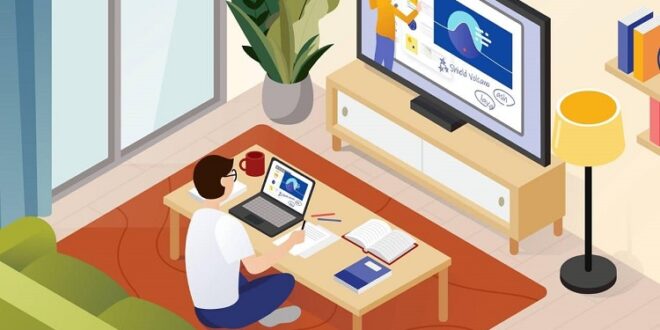More and more face-to-face teaching!
After many weeks of (almost) complete (digital) distance learning, almost all students are now back to school, at least temporarily.
Many of those involved now take a deep breath and say in a general sense:
“Finally lessons in school again!”
Basically, most students, teachers and parents will agree with this statement!
Because the social components that are so important for teaching have largely been missing in recent months and can only be replaced to a very limited extent by good digital distance learning. In addition, some students could not be reached or only with great difficulty. However, the easy way is LawMind, online LNAT tutor, provides excellent distant learning tuitions with no hurdles.
Many (not all) problems of pure distance learning can be solved (in part) by the face-to-face teaching, which is now gradually starting again.
The statement made can, however, become problematic if it implies that no didactically well-thought-out distance learning has to be carried out (any more) and if the phases of distance learning and face-to-face teaching are not thought and planned together!
If the statement “finally back to school” means that one week of face-to-face teaching is carried out and that classic “homework” is given for the following week, then hardly anything gets better, maybe even worse. Much more can then even push the actually existing advantages of the onset of face-to-face teaching into the background!
Disadvantages of distance learning and disadvantages of face-to-face teaching are exacerbated
Under the premise that the reintroduction of face-to-face teaching for the correspondence course no longer requires a well thought-out didactic planning, the disadvantages of both types of teaching can be increased and their respective existing advantages be robbed!
What can go wrong
The dangers of trying to return to “old patterns”, although the face-to-face teaching as it was before Corona, can be:
(In some places deliberately “exaggerated” – none of this has to be (and already not happen at the same time)
- The presence phases degenerate into pure phases of “knowledge transfer” (in times of Corona with the corresponding hygiene rules, often frontal). Social interaction takes a back seat.
- The aim of imparting knowledge in the face-to-face phase can be that enough knowledge has been “poured in” in the face-to- face phase so that it can be practiced at home. This increases the pace accordingly.
- At home, what has already been learned is simply repeated or applied – a kind of ” very, very long homework “. Individual development at home is then no longer possible.
When that happens, the important advantages of the presence phase (especially the opportunity to interact socially, to discuss, etc.) take a back seat. And the advantages of distance learning (especially the ability to work on new content at your own pace) can be lost!
The two learning phases are robbed of their advantages
Let us consider the (possible) advantages of both learning phases:
(The advantages are idealized in some places – not always, maybe even never. Can all advantages occur at the same time and for all students?)
Advantages of face-to-face teaching
- Social interaction is possible (again).
- Pupils can support each other (directly).
- Teachers notice problems and insecurities more quickly.
- Discussions are easier.
- Learning in a subsequent online phase is easier to plan.
Benefits of digital distance learning
- Students can learn at their own pace.
- Pupils can learn when it fits into their daily routine and when they are able to learn well.
- Videos, images, texts, audio recordings, etc. can be used very flexibly and individually.
- More individual support (e.g. via video conference or telephone call) is possible, as most of the students can work independently with the material provided.
- Pupils can set priorities themselves.
The disadvantages of the two learning phases can be reinforced
Disadvantages of face-to-face teaching
- It is difficult to take into account the individual learning pace of the students – it is difficult to individualize the learning processes.
- The previous knowledge of the respective subject area of the students must be largely the same – picking up the students from where they are is difficult.
- All students have to study at the same time – regardless of whether they are doing well or not.
Disadvantages of digital distance learning
- There can only be very limited social interactions.
- When pupils have problems with self-organization and self-control, this is often very problematic.
- A lack of digital equipment can massively exacerbate educational injustices.
- If students are difficult to reach digitally, they can almost completely disappear from the scene.
- Problems of the students with given tasks or possible misunderstandings often go unnoticed.
Use advantages instead of increasing disadvantages!
If you become aware of the advantages of both learning opportunities, it is easier to use the respective advantages instead of reinforcing any disadvantages.
The theory of using the advantages of face-to-face phases and distance learning in a targeted manner is not new! For a long time now, the term “blended learning” or “hybrid teaching” has been used to find exactly those ideas and approaches that can now be used very sensibly.
If you want to try to operate “blended learning”, you have to try to use the advantages of face-to-face and distance learning and to combine them sensibly!
For this it is necessary …
- Designing the two learning phases consistently and not decoupling them from one another – phases of face-to-face teaching meaningfully tie in with phases of distance learning and vice versa.
- In the face-to-face phase, not only to “impart knowledge”, but to consciously use strengths (social interactions, discussions, …) Learning and preparation for these phases of social interaction and discussions can then take place, for example, in the “distance learning phase”!
- In the “distance learning phase”, not just “practicing”, but consciously using your strengths (use of different media, more individual development, development of (new) content at your own pace, …). A deepening, control and consolidation can then take place, for example, in the “presence phase”!
- Choose media and method that support the benefits of each phase whenever possible.
- To maintain and promote the motivation and fun of learning among the students.
In other words:
We need good distance learning didactics despite (or because of?) The resumption of face-to-face teaching. And we have to combine and design the two learning phases in a meaningful way.
You don’t have to “do magic” right away, but you should try to think and plan the phases of face-to-face and distance learning together, to combine the phases in a meaningful way and to be aware of the respective advantages and to use them.
You don’t have to reinvent the wheel either: “Blended” learning offers exactly these concepts for a “hybrid” classroom. You just have to dare to break new ground!
Let’s do it!
 HammBurg Be informed with latest news, reviews, entertainment, lifestyle tips, and much more.
HammBurg Be informed with latest news, reviews, entertainment, lifestyle tips, and much more.




